Topics
Category
Era
Foshay Tower
Since 1929, the Foshay Tower has been a vital part of the Minneapolis skyline. When it was built, the thirty-two-story tower was the tallest building between Chicago and the West Coast. In the 1970s and 1980s, much taller skyscrapers were built, but the attractive Foshay Tower remained a crowning glory of Minnesota architecture.
Minneapolis businessman Wilbur B. Foshay was responsible for erecting this landmark. Foshay arrived in Minneapolis in 1915 to work for a local manufacturer of electric-light poles and telephone poles. He had spent most of the previous decade working for various utilities companies, and in 1916, he bought his own-the Ponca Electric Company of Nebraska.
In 1917, he incorporated the W. B. Foshay Company in Minneapolis. Then he and his company went on a spending spree, buying utilities in thirty states, Alaska (which wouldn't become a state until 1958), Canada, and Central America.
Foshay's company needed a headquarters. In the 1920s, the skyscraper was the dominant form of urban corporate architecture. Foshay wanted to build his own. He understood the promotional power of a tower with his name emblazoned on every side in ten-foot tall letters. Foshay told reporters that he had gotten the idea for the structure as a child. His father had taken him to see the Washington Monument in the nation's capital. Foshay claimed that his memory of that marvelous sight inspired him to erect his tower.
In 1928, the Foshay Building Corporation sold stock to raise the proposed $4,409,633.82 needed to erect the tower. Construction began that same year and continued through the summer of 1929. When the Foshay Tower was complete, it rose just over 447 feet in the heart of downtown Minneapolis. Leon Arnal of the Minneapolis architectural firm Magney and Tusler conceived its tapering Art Deco design. The tower actually was built upon an existing two-story structure, which formed the base of the new skyscraper.
Foshay spared no expense. He hired famed sculptor Harriet Frishmuth to cast a bronze statue, Scherzo, for the building's courtyard. An observation deck was added so visitors could get a bird's-eye view of the downtown and Mississippi River. Marble, exotic woods, and bronze decorated the interiors. The twenty-seventh and twenty-eighth floors were occupied by Foshay's lavish private offices and apartment, whose bathrooms boasted gold-plated faucets.
Foshay celebrated the opening of the tower with a three-day event, August 30 to September 1, that featured fireworks, dancing girls, and religious services. John Philip Sousa wrote the "Foshay Tower Washington Memorial March," which his band performed several times during the festivities. The U.S. Secretary of War, James W. Good, arrived from Washington, D.C., to dedicate the structure. The Foshay Company paid travel expenses for dozens of dignitaries from across the nation. Special guests were also given complimentary gold watches, courtesy of the company. The total cost added up to $126, 894. Days later, Foshay rushed to New York to secure money to keep his company afloat.
Foshay's empire collapsed soon after the celebration. The stock market crash in late October wiped him out professionally and personally. There was no money to pay off the tower's builders, let alone to meet the payroll. Foshay's check to Sousa bounced and the disgruntled bandleader forbade the playing of the "Foshay March" until the debt was paid. The W.B. Foshay Company folded, and the tower was put up for auction. Foshay faced criminal charges for mail fraud and, after two trials, ended up in Leavenworth Federal Penitentiary.
Over the years, ownership of the Foshay Tower changed a number of times. But even when other downtown buildings of its era were torn down, the Foshay remained. It had become a cherished Minneapolis icon and a reminder of the golden age of the 1920s. In 1978, the structure was added to the National Register of Historic Places.
Still, time and neglect took a toll on the aging building. Twin Cities real estate developer Ralph W. Burnet and Ryan Companies announced plans to renovate the tower in 2006. They hired local historic consultants Hess Roise and Company to help restore some of the original Art Deco features. On August 13, 2008, the refurbished Foshay Tower reopened as the W Minneapolis-The Foshay, a 230-room hotel. Ashford Hospitality Trust purchased the Foshay Tower for $86 million on November 10, 2015.
Bibliography
Aamodt, Britt. "Wilbur B. Foshay: The Man and His Tower, part 1." KFAI radio documentary, 2011.
https://ampers.org/mn-art-culture-history/wilbur-b-foshay-the-man-his-tower-part-i
——— . "Wilbur B. Foshay: The Man and His Tower, part 2." KFAI radio documentary, 2011.
https://ampers.org/mn-art-culture-history/wilbur-b-foshay-the-man-his-tower-part-ii
McNulty, Marcy Frances. "Wilbur Burton Foshay: The Saga of a Salesman." Master's Thesis, Creighton University, 1964.
Wingerd, Mary Lethert. Claiming the City: Politics, Faith, and the Power of Place in St. Paul. Ithaca, NY: Cornell University Press, 2001.
Related Resources
Primary
N103
Magney and Tusler papers, 1927–1981
Manuscript Collection,University of Minnesota-Northwest Architectural Archives, Minneapolis
http://special.lib.umn.edu/findaid/xml/naa103.xml
Description: The collection contains five original pencil sketches for the Foshay Tower by Leon Arnal, principal designer in the Magney and Tusler firm, as well as nine sheets of blueprints of interior details and sixty-nine ink-on-linen structural drawings.
F613 .M8 F6
Pamphlets Relating to the Foshay Tower in Minneapolis Minnesota, 1929–
Pamphlet Collection, Minnesota Historical Society, St. Paul
Description: Printed materials related to the design, construction, marketing, celebrations, and other topics related to the Foshay Tower.
P440
Papers Relating to Wilbur B. Foshay, 1929–1966
Manuscript Collection Minnesota Historical Society, St. Paul
Description: Papers relating to Wilbur B. Foshay and the Foshay Tower.
Secondary
Douglas, George H. Skyscrapers: A Social History in America. Jefferson, N.C.: McFarland and Company, 1996.
Foshay Tower, A Business Address of Prestige: Minneapolis, 1929; Marquette to Second Avenue South on Ninth Street. Minneapolis: Tower Press, Inc., 1929.
Foshay Tower Dedication, Consecration Service: Sunday, Septmeber First, 1929. Minneapolis: Tower Press, Inc., [1929].
Foshay Tower: Minneapolis; Best Known Address in the Northwest. [Minneapolis]: Walter L. Kroneberger Foshay Building Corporation, 1932.
Parsons, James. "Foshay's Folly," Twin Citian, March 1966.
Swanson, William. "Wilbur Foshay, Crook," Twin Cities Business, September 2009.
http://tcbmag.com/Leadership/Leaders/Wilbur-Foshay-Crook
"The Tower and W.B. Foshay." Hennepin County History 27, no. 2 (Fall 1967): 4–6.
Web
National Register of Historic Places. Foshay Tower.
http://focus.nps.gov/nrhp/AssetDetail?assetID=8c442e61-7966-451d-96d1-1018826df2a3
Related Images
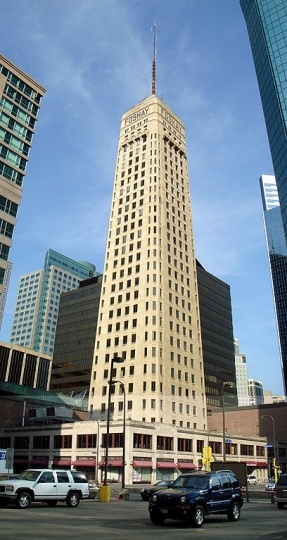
Foshay Tower
Holding Location
Articles
More Information
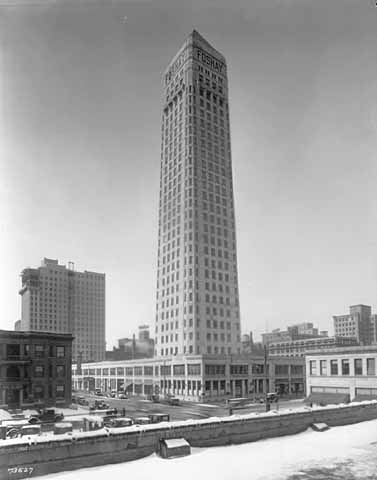
Foshay Tower, Minneapolis
Holding Location
More Information
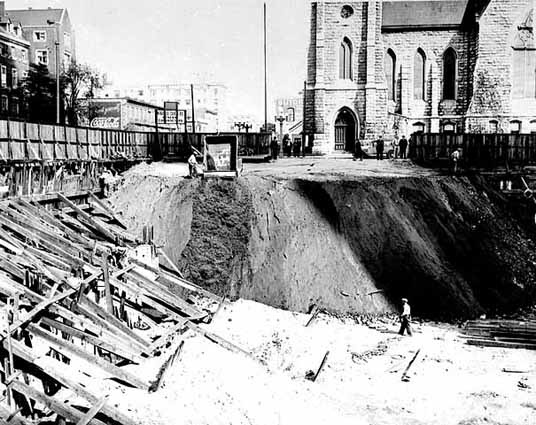
Excavation for Foshay Tower, Marquette and Ninth, Minneapolis
Holding Location
Articles
More Information
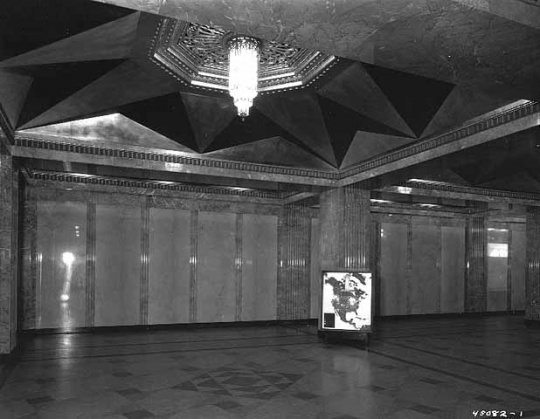
Interior of the Foshay Tower, Minneapolis
Holding Location
Articles
More Information
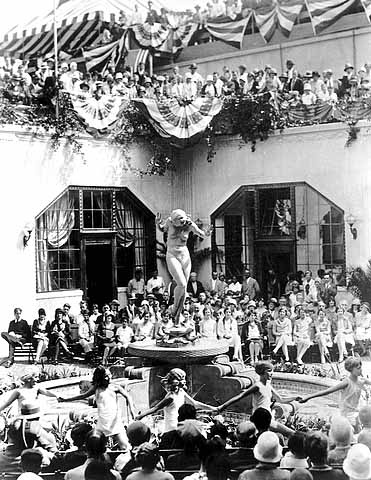
Dedication ceremonies of the Foshay Tower taken in the gardencourt showing "Scherzo" sculpture, Minneapolis
Holding Location
Articles
More Information
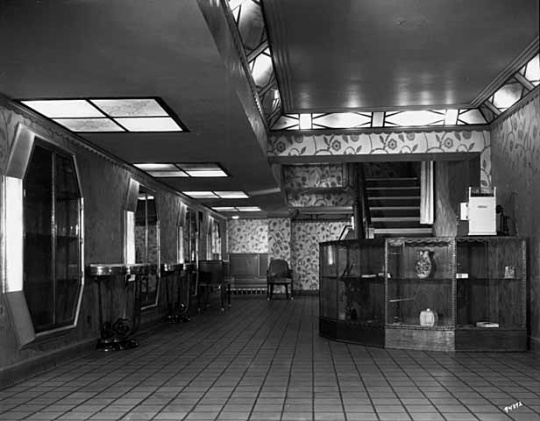
Reception and Waiting Room, Foshay Tower Corporation, Minneapolis
Holding Location
Articles
More Information
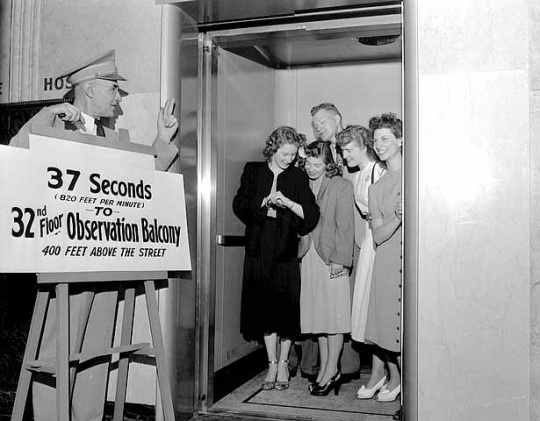
Elevator to Foshay Tower observation balcony, Minneapolis
Holding Location
Articles
More Information
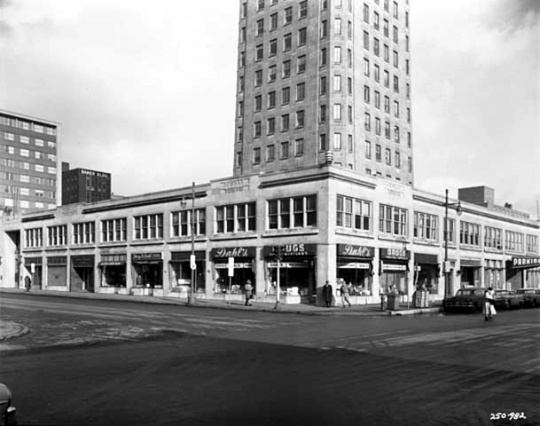
Foshay Tower at Ninth Street and Marquette, Minneapolis
Holding Location
Articles
More Information
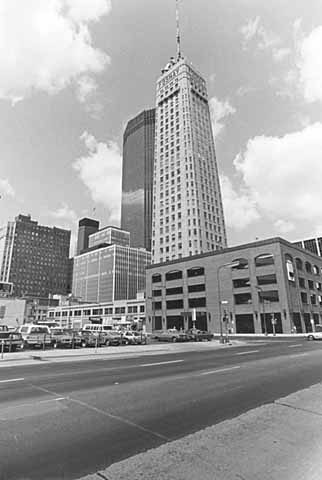
Foshay Tower and IDS Center, Minneapolis
Holding Location
Articles
More Information
Related Articles
Turning Point
On Labor Day weekend 1929, the Foshay Tower debuts with one of the grandest building-dedication ceremonies in Minneapolis history.
Chronology
1927
1928
1929
1960
2006
2008
November 10, 2015.
Bibliography
Aamodt, Britt. "Wilbur B. Foshay: The Man and His Tower, part 1." KFAI radio documentary, 2011.
https://ampers.org/mn-art-culture-history/wilbur-b-foshay-the-man-his-tower-part-i
——— . "Wilbur B. Foshay: The Man and His Tower, part 2." KFAI radio documentary, 2011.
https://ampers.org/mn-art-culture-history/wilbur-b-foshay-the-man-his-tower-part-ii
McNulty, Marcy Frances. "Wilbur Burton Foshay: The Saga of a Salesman." Master's Thesis, Creighton University, 1964.
Wingerd, Mary Lethert. Claiming the City: Politics, Faith, and the Power of Place in St. Paul. Ithaca, NY: Cornell University Press, 2001.
Related Resources
Primary
N103
Magney and Tusler papers, 1927–1981
Manuscript Collection,University of Minnesota-Northwest Architectural Archives, Minneapolis
http://special.lib.umn.edu/findaid/xml/naa103.xml
Description: The collection contains five original pencil sketches for the Foshay Tower by Leon Arnal, principal designer in the Magney and Tusler firm, as well as nine sheets of blueprints of interior details and sixty-nine ink-on-linen structural drawings.
F613 .M8 F6
Pamphlets Relating to the Foshay Tower in Minneapolis Minnesota, 1929–
Pamphlet Collection, Minnesota Historical Society, St. Paul
Description: Printed materials related to the design, construction, marketing, celebrations, and other topics related to the Foshay Tower.
P440
Papers Relating to Wilbur B. Foshay, 1929–1966
Manuscript Collection Minnesota Historical Society, St. Paul
Description: Papers relating to Wilbur B. Foshay and the Foshay Tower.
Secondary
Douglas, George H. Skyscrapers: A Social History in America. Jefferson, N.C.: McFarland and Company, 1996.
Foshay Tower, A Business Address of Prestige: Minneapolis, 1929; Marquette to Second Avenue South on Ninth Street. Minneapolis: Tower Press, Inc., 1929.
Foshay Tower Dedication, Consecration Service: Sunday, Septmeber First, 1929. Minneapolis: Tower Press, Inc., [1929].
Foshay Tower: Minneapolis; Best Known Address in the Northwest. [Minneapolis]: Walter L. Kroneberger Foshay Building Corporation, 1932.
Parsons, James. "Foshay's Folly," Twin Citian, March 1966.
Swanson, William. "Wilbur Foshay, Crook," Twin Cities Business, September 2009.
http://tcbmag.com/Leadership/Leaders/Wilbur-Foshay-Crook
"The Tower and W.B. Foshay." Hennepin County History 27, no. 2 (Fall 1967): 4–6.
Web
National Register of Historic Places. Foshay Tower.
http://focus.nps.gov/nrhp/AssetDetail?assetID=8c442e61-7966-451d-96d1-1018826df2a3










